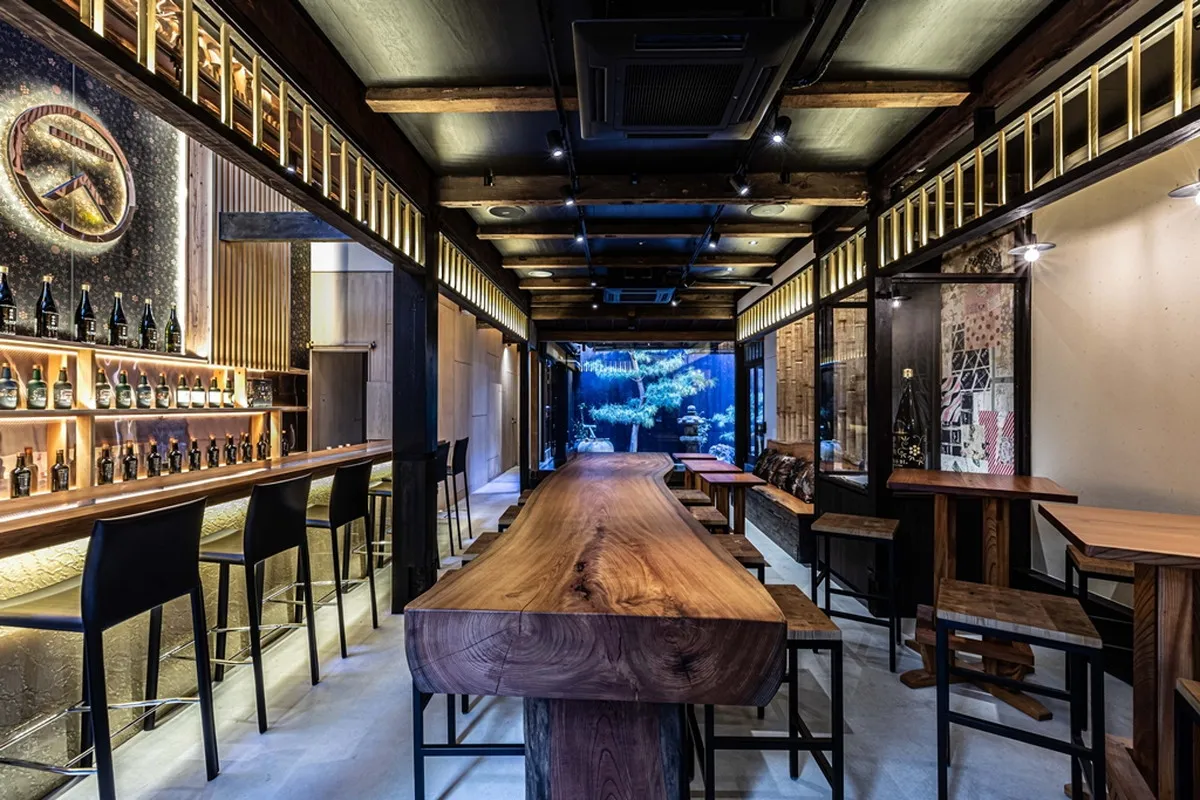Savor Kyoto in Every Sip of Craft Gin at House of KI NO BI:
A couple of years back, we stumbled upon a craft gin that really turned our heads—Kinobi. The first sip was a revelation, truly a game-changer in how we thought about gin. It wasn’t just the burst of citrus that hit you first, or the way it felt refreshingly crisp on the palate. What really got us was how perfectly fine it was to enjoy it straight, no mixers needed. And the bottle? Oh, it’s a piece of art! Crafted by artists from Kyoto, every detail of the Kinobi bottle screams Kyoto, drawing you into its aesthetic charm with every glance.
The brains behind this delightful gin are nestled in the heart of Kyoto at the House of KI NO BI—a distillery that prides itself on blending traditional Japanese distillation methods with a knack for innovation. Founded in 2015 by David Croll, Marcin Miller, and Alex Davies, their mission was clear: craft a gin that captures the cultural and spiritual essence of Kyoto. And they succeeded!
The House of KI NO BI not only crafts exquisite gin but also offers a stunning space for visitors to relax and indulge in cocktails made with Kinobi. Housed in a beautifully renovated old two-story Machiya, this inviting setting enhances every visit. During their exclusive tasting seminars, guests have the unique opportunity to explore the ‘6 Elements’—the unblended distillates that compose Kinobi gin. This experience provides an in-depth look at the elaborate production methods and the distinct flavors of their gins. Conveniently located on Kawaramachi Street, just a few-minute walk from Hotel Okura Kyoto, the House of KI NO BI is a must-visit for gin enthusiasts and novices alike.
The name KI NO BI itself translates to “the beauty of the seasons,” and this philosophy is deeply ingrained in how they produce their gin. They use a rotating roster of local botanicals, handpicked to reflect the changing seasons of Kyoto. From the zesty yuzu to the tingly sansho pepper, from aromatic green tea to the subtly sweet bamboo leaves, and the distinct kinome—a local variety of Japanese pepper—each ingredient is a nod to Kyoto’s rich flora.
Their distillation process is something of a ritual. It starts with steeping these carefully chosen botanicals in a neutral spirit to coax out their vibrant flavors and aromas. This infused spirit then meets the copper pot stills, where it’s distilled to achieve a harmonious balance of complexity and smoothness that Kinobi is known for. You can learn more about the process at the House of KI NO BI.
What’s really cool about House of KI NO BI is their variety of gin expressions. They don’t just stick to one; they play around, and each version is a new discovery. Their flagship, KI NO BI Kyoto Dry Gin, features a blend of eleven botanicals including yuzu and sansho pepper. For those who lean towards a tea-infused variety, there’s KI NO TEA Gin, which includes tencha, a refined green tea. Then there’s the KI NO BI SEI, aged in oak casks for those who appreciate a deeper, woodier touch. And let’s not forget the KI NO BI Navy Strength Gin—a robust version bottled at 54.5% ABV for those who like their gin strong.
Every now and then, they also drop these limited-edition releases. Each is a collector’s dream, with unique flavors and often some seriously cool, bespoke packaging. These special bottles could be found only at House of KI NO BI and fly off the shelves as both collectors and gin enthusiasts scramble to get their hands on them.
Our personal journey with Kinobi has been nothing short of exhilarating. Each bottle tells a new story, each sip a new adventure. Whether it’s unwinding after a long day or celebrating a special occasion, Kinobi has become our go-to gin. It’s not just about drinking gin; it’s about experiencing a piece of Kyoto, one sip at a time. And trust us, once you’ve tried Kinobi, there’s just no going back to ordinary gin.
